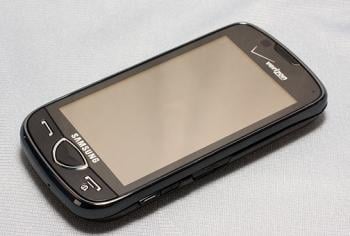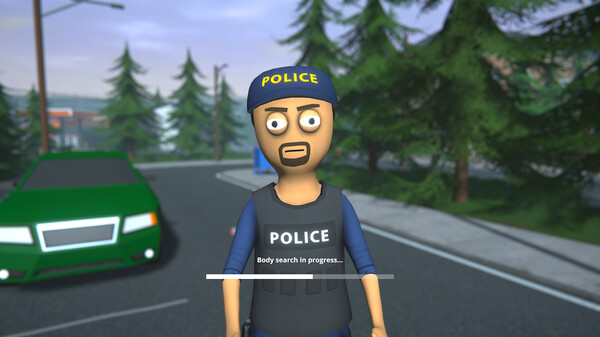Quietly, amidst the multiple HTC Touch Pro 2 releases, Samsung refreshed its Omnia line with a slew of new Windows Mobile devices. The Samsung Omnia II is a black-slab, touchscreen device hone that sports a 5-megapixel camera and a hefty 8 gigabytes of storage memory. Verizon picked it up late last year.
Our initial impression has been positive. Our main concern was the customization that Samsung has installed on the Omnia II. Not only does the Omnia II have Samsung's TouchWiz user interface, Samsung also also tweaked the interior Windows Mobile screens and menus.
Follow the break to see if this customization makes or breaks the Omnia II.
Design
Straight out of the box, the first impressions of the Omnia II was that it felt good in the hand and that the glossy finish was sure to attract fingerprints from across the room. Measuring 4.69 inches by 2.38 inches by 0.52 inches and weighing 4.76 ounces, the Omnia II is very similar in size to the HTC Imagio.
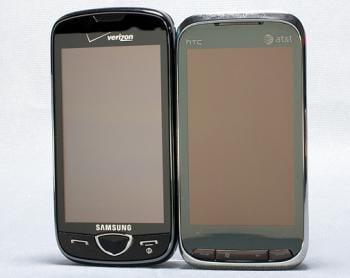
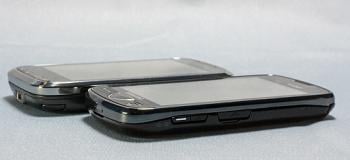
The Omnia II is a touch taller than the Touch Pro 2 and is a smidgen thinner. Compared to the original Omnia, the Omnia II is a little beefier, but not enough to be annoying.
| Dimensions | Weight | |
| Samsung Omnia II | 4.69"x2.38"x.52" | 4.76 ounces |
| HTC Imagio | 4.65"x2.43"x.55" | 5.3 ounces |
| HTC Pure | 4.33"x2.10"x.59" | 4.10 ounces |
| Samsung Omnia | 4.41"x2.24x.49" | 4.3 ounces |
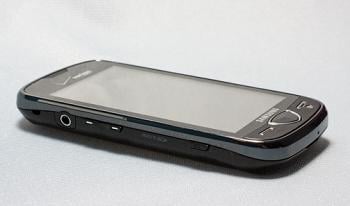
The layout of the Omnia II has the 3.5mm headphone jack, volume keys, and "ok" button on the left side of the phone. On the right side of the phone you will find the microUSB port, "lock" button and camera shutter button. A collapsible stylus is stored on the right side as well.
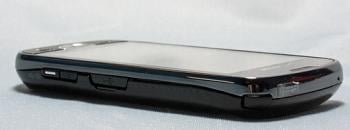
The Omnia II has a microSD expansion slot underneath the battery cover. A 5-megapixel camera with flash is on the rear.
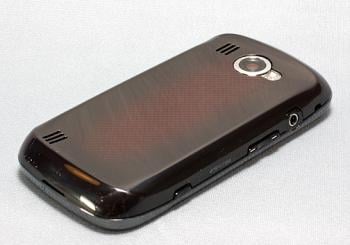
The front-facing button row is simple with an answer, end and a center button that takes you to the custom Start Menu. There is no directional pad on the Omnia II. The end button doubles as your power/wake-up button.
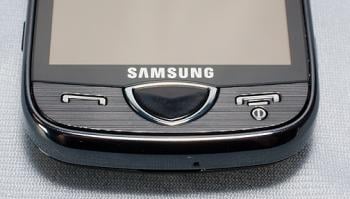
The "lock" button turns off the Omnia II's screen. You can set the phone to wake up directly in pressing the end key or go to a "tap to unlock" screen.

I did like the red diamond pattern on the battery cover, but I didn't like the glossy finish. A textured, matte finish would be more practical and require less maintenance.
Under the hood
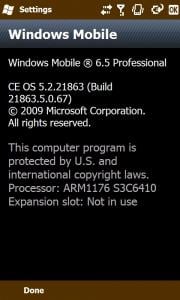
It was hard to pin down what exactly is driving the Samsung Omnia II. Based on the Settings Menu it has a ARM1176 processor running at 667MHz. But other reports have it with a Samsung S3C6410 processor at 800MHz. Regardless, this Omnia II moved along a little on the sluggish side. Really sluggish if the processor is supposed to be a 800 MHz engine. Applications loaded slowly and transitions within applications inched along as well. Oddly enough, Opera 9.5 moved along nicely (due to Verizon's larger map?) with no unusual delays in page and image load times.
It does have 256MB of RAM and 8GB of storage and is powered by a 1500mAh battery, rated at six hours of talk time and 16 days of standby time. But in reality, the battery will last the day with moderate use.
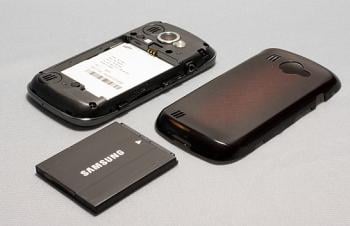
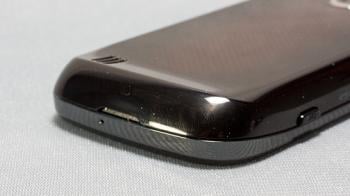
I'm not a big fan of the battery door. The Omnia II's battery door pries off via a small divot/recess (using a coin or sturdy fingernail) at the bottom of the Windows phone. I just see this area wearing with repeated use and would have preferred a sliding battery cover.
Screen
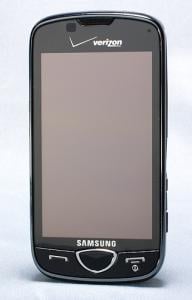
The Omnia II has a 3.7-inch, 480x800, Active Matrix Organic Light Emitted Diode (say that ten times fast) screen. AMOLED for short, the Omnia II's screen has nice colors, sharp to the view but noticeably difficult to view in bright sunlight. AMOLED also is easier on the battery than a traditional LED screen.
The resistive touchscreen was marginally responsive and had a stiff feel to it. There were the typical difficult spots along the edges, but even the middle of the screen could be stubborn at times to the touch.
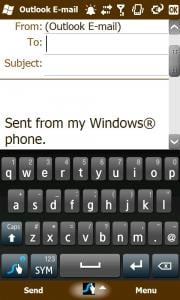
The Omnia II relies on an on-screen keyboard. I liked the Samsung keyboard and typing was "doable," but the stiff screen presented the challenges more than the keyboard layout. Along with the block and letter recognizer, you also have the traditional Windows Mobile keyboard (with the teeny-tiny keys), a Samsung Keyboard (with larger keys), and Samsung also included Swype as a keyboard option.
Software
The Omnia II is a Windows phone running Windows Mobile 6.5. If it wasn't for the Start Menu in the upper left corner of the screen, you might overlook that fact.
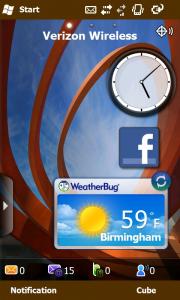
Samsung has customized the Omnia II rather extensively. From the TouchWiz user interface to customizing sub-menus and screens, Samsung has strayed from the traditional Windows Mobile appearance, and done so at a deep level. That in and of itself isn't a bad thing, but ...
Touchwiz/WidgetPlus
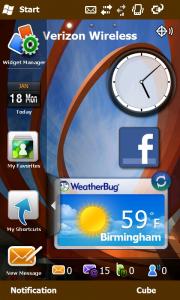
TouchWiz is Samsung's user interface, and Widgets Plus is Samsung's Today Screen customization.
WidgetPlus uses a series of widgets and reminds me a little of SPB Mobile Shell. The layout is simple. To the left you have a vertically scrollable widget bar. The bar can be collapsed to give way to the full screen and you can tap/drag the widgets from the bar to the main screen area/page. You can fill up to three pages of widgets that are horizontally scrollable.
At the bottom of the screen you will have your communications icons showing any unread email, sms, voice mail or missed calls. TouchWiz takes some getting used to and isn't for everyone. Should you end up not liking WidgetPlus, the traditional Windows Mobile Titanium layout is available.
TouchWiz
From the appearance of the Start Menu to how the Settings Menu is laid out, you would be hard pressed to recognize the Omnia II as running Windows Mobile. TouchWiz's Start Menu resembles more of an iPhone than a Windows phone. You have icons spread out amongst a five page, horizontally scrollable layout. The icons can be deleted and re-arranged between the pages.
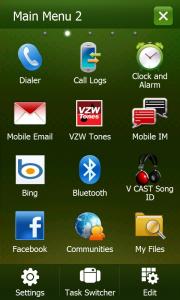
The Settings Menu is a vertically scrolling list of options that are tabbed between basic and advanced settings. Even the individual settings screens are unique.
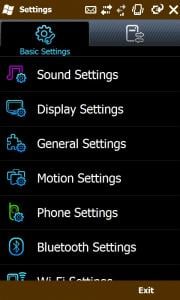
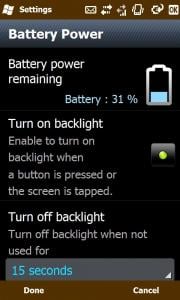
Again, I don't fault Samsung for customizing the Omnia II to allow the phone to stand out. However, there needs to be a level of consistency in how Windows Mobile is presented, especially with regards to the settings menus. Samsung has done a nice job making stock applications such as the calendar or the file browser stand out but they really needed to keep uniformity with the settings menus.
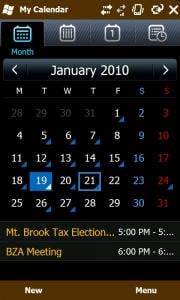
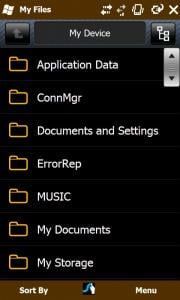
You can turn the TouchWiz interface on and off and return to the traditional Windows Mobile Start menu, but the sub-menus still keep their uniqueness. This is where Samsung's customization places the Omnia II into a category by itself.
Additional Software Features
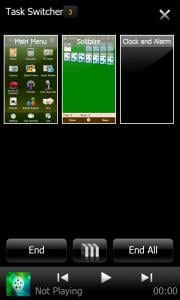
Samsung has a Task Switcher which reminds me of the Task Manager on the LG Expo. It offers a screen shot of any open application and tapping that screen shot sends you into the application. You have the choice of ending singular apps or ending them all.
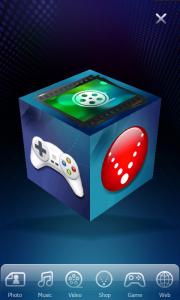
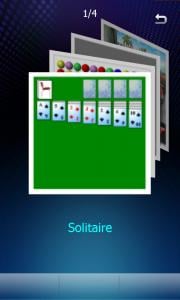
Along with the Start Menu, you also have the Cube Screen launcher. The Cube Screen sorts your applications into six broad categories. The cube itself can be rotated by touch or you can use the navigation icons at the bottom. When you tap a category a Rolodex of your apps appear for you to browse through. The Cube Screen seemed a little redundant when it's just as easy to launch an application from the Start Menu.

The Omnia II has the customary Verizon bloatware including the V Cast suite, Navigator as well as Bing, Facebook, Opera Mobile 9.5, the Mobile Office Suite and Marketplace/My Phone.
Samsung has place so much customization on the Omnia II that I've probably missing something. I can't say that all the changes Samsung has implemented are bad but instead, different than what the traditional Windows Mobile user are accustomed to. Personally, I would have preferred the TouchWiz home screen interface with the traditional sub-menus. I like the familiarity and consistency by having everything beyond the Home Screen in the same ballpark.
Camera
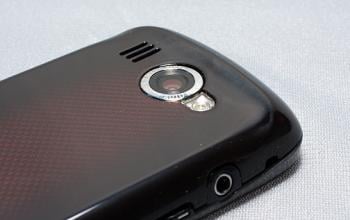
The Omnia II is fitted with a variable-focus, 5-megapixel camera that also has video capture capability. The camera might be the Omnia II's strongest feature but the software is a little quirky. I'll have a full review on the camera's performance and software shortly.
GPS
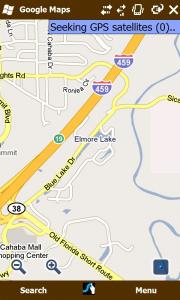
GPS performance was a little on the slow side using Bing and GoogleMaps. From a cold start, it took well over a minute to acquire an accurate position. For the longest, I found myself in Seattle as opposed to Birmingham, Ala. The Omnia II seemed to like GoogleMaps a little better and from a warm start, the GPS performed well. It was that initial startup that took an eternity.
The Omnia II comes loaded with Verizon's Navigator. I'd like to comment on Navigator's performance but kept getting "Could not process your request" error messages when I tried to connect to the network. I also had trouble accessing V Cast so it may have been an issue with these features not being active or "network" issues in my area.
Phone Performance
With regards to the Omnia II as a phone, it performed good. Call quality was on par with any other Windows phone and the speaker phone was respectable. One oddity with the Omnia II's phone performance is that the screen doesn't turn off while on a call. I expected at least the screen to turn off once a call is connected.
Overall Impressions
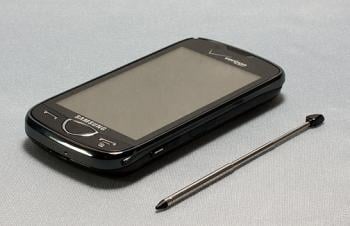
The Samsung Omnia II from Verizon is well-built, comfortable in the hand, and a large-screened Windows Phone. While I liked the form factor, the customizations that Samsung put in place seemed to detract from the phone. The TouchWiz user interface does grow on you but Samsung needed to stop there. Changing the other Windows Mobile screens can be confusing, especially if you're already used to the traditional layouts.
Phone performance is good, battery life respectable but the touch screen could have been more responsive to the touch. GPS performance is par but very slow when working from a cold start. Applications loaded alright but the overall performance was a bit sluggish.
The Omnia II might be a good entry-level Windows Phone. But if you have any exposure to Windows Mobile, the Omnia II will take a while to get used to. If I were to look for a Windows Phone on the Verizon Wireless network, I would consider the HTC Imagio or the Touch Pro 2 first. Currently, all three Windows Phones are running $199.99 after contractual discounts.
The Omnia II's customization sets it apart, I just don't know if that's a good thing.
George is the Reviews Editor at Windows Central, concentrating on Windows 10 PC and Mobile apps. He's been a supporter of the platform since the days of Windows CE and uses his current Windows 10 Mobile phone daily to keep up with life and enjoy a game during down time.
